Installing a pond leveller for beavers
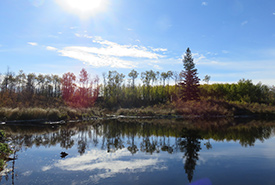
Wetland at the Kallal property, AB (Photo by NCC)
It was a crisp October morning and a thin layer of ice covered the surface of the wetlands as we drove out to the Kallal property. This site, located 40 minutes east of Edmonton in the Beaver Hills, was purchased by the Nature Conservancy of...
Pikas and their islands in the Rockies
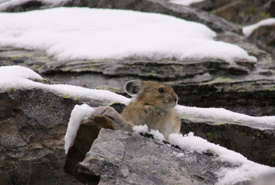
American pika (Photo by Allison Haskell)
What’s your favourite animal? It’s a common question for many of us with a fascination for wildlife and a passion for conserving the natural world around us. When I answer that my favourite species is American pika, some people are...
Where are they now? Intern Alumni Spotlight: Victoria Shore
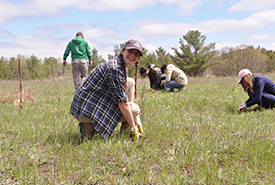
Victoria Shore planting native species while working as an intern at NCC (Photo by NCC)
This blog marks the seventh Intern Alumni Spotlight — a series highlighting some of the individuals who have interned with the Nature Conservancy of Canada (NCC) in the past. Last month, Ryan Dudragne was featured as the Intern Alumni...
A cozy nest for a common gartersnake
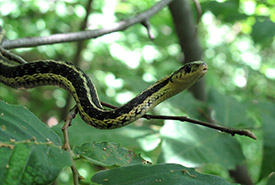
Common gartersnake (Photo by Hugo Tremblay-CERFO)
You won’t be surprised to hear that my fellow scientists spend a lot of time in the field in the spring and summer (for species inventories, invasive species control, property monitoring, etc.), but when the snow flies and temperatures drop...
Antlers of the East: Tracking the decline of the Atlantic-Gaspésie caribou (part one)
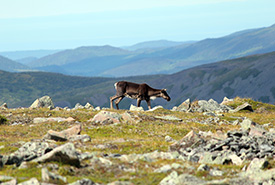
Woodland caribou at the summit of Mont Jacques-Cartier, tallest among the Chic Choc Mountains of Gaspésie National Park, QC. (Photo by Zack Metcalfe)
It was August 18, 2017, when I gained the summit of Mont Jacques-Cartier, an alpine peak of shattered stone and meagre vegetation some 1,270 metres above Quebec’s Gaspé Peninsula. Several stones were organized into mounds, marking the...
A world without wetlands
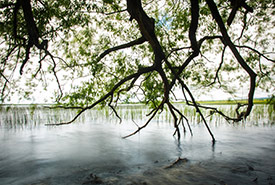
Brighton Wetland, Eastern Lake Ontario Coast (Photo by David Coulson)
I live next to a swamp. After 20 years of having this swamp as my neighbour, it’s kind of grown on me. I enjoy the spring flush of marsh marigolds, the annual reawakening of spring peepers, and I still smile when I see a colourful wood duck...
Climate change, fire and their implications for species
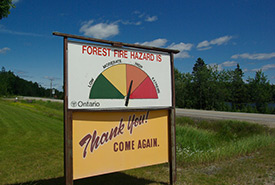
Will forest fire hazard signs be over into the red more often because of climate change? (Photo by Aaron H Warren CC BY-ND 2.0)
The role of fire in forest ecosystems Forest fires are powerful and devastating. But they are also necessary for the rejuvenation of some ecosystems. Many plants are well adapted to fire. Some trees have dense bark or shed their lower limbs to...
New guidelines for privately protected areas
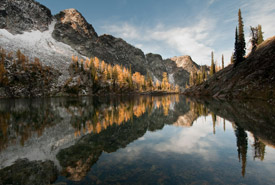
Alpine Lake on Darkwoods, BC (Photo by Bruce Kirkby)
Privately protected areas (PPAs) are protected areas under private governance, as defined by the International Union for Conservation of Nature (IUCN). Private governance includes non-governmental organizations, corporations, for-profit owners,...
Ten good news nature conservation stories from 2018: Our collective actions can have a big impact
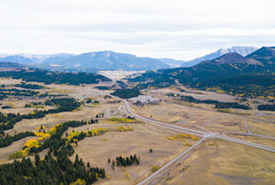
Lands within the Jim Prentice Wildlife Corridor (Photo by Brent Calver)
Around the world, we are at a crossroads in our relationship with the planet. For the first time in human history our environmental impacts are happening at a scale that is affecting all life on Earth. Our collective experience in solving big,...
The Nature Conservancy of Canada's mark in conservation history
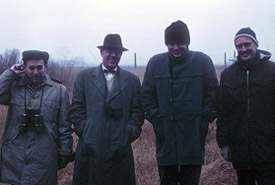
J. Bruce Falls, Richard Pough, Aird Lewis and David Fowle. First exploratory meeting for the Nature Conservancy of Canada, 1961 (NCC archives)
Since 1962, the Nature Conservancy of Canada (NCC) has worked to protect our country’s most important natural areas and the species they sustain. And to think it all started with a spirited group of naturalists in Toronto, Ontario, more than...

